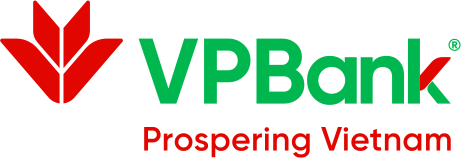VPBank speeds partner integration with Red Hat OpenShift
VPBank, one of Vietnam’s leading commercial banks, sought to meet increasing demand for responsive digital services in one of the fastest growing markets in Southeast Asia. To create and support an application programming interface (API) catalog to support its growing partner network, VPBank worked with Red Hat. With Red Hat OpenShift, a leading enterprise Kubernetes platform, the bank can now quickly and securely integrate with new partners in days, rather than months, to deliver new banking services to market faster.
Benefits:
- Reduced time needed to integrate new partners from months to days
- Achieved scalability to support rapid business growth
- Enhanced operational visibility to optimize digital service operations
VPBank strengthens partner connections to respond to Vietnam‘s economic growth
Vietnam’s economy is rapidly growing, with increasing foreign direct investment and adoption of digital services. The country’s youthful population, mobile-first mindset, and focus on dynamic start-up business is helping to promote a focus on preparing applications and platforms for this cultural evolution.
With 19 million customers, VPBank is one of Vietnam’s leading commercial banks. As part of its vision to become the country’s most consumer-friendly and technology-driven bank, VPBank aims to be one of Vietnam’s three most valuable banks by 2022. A key aspect achieving this vision is to expand its partner ecosystem using open banking application programming interfaces (APIs).
“Unlike other countries, Vietnam’s economy is not dominated by two or three large enterprises. We have a thriving SMB [small and medium business] sector, which means more partners and more connections to make,” said Augustine Wong, CIO, VPBank. “We need to integrate new partners faster and deliver new services for customers faster.”
By improving integration with a range of partners—from e-commerce platforms and online malls to classified advertisers and payments systems—VPBank can stay ahead of fintech startup competition and position itself as a modern market leader.
After initially creating a centralized partner integration hub to host an easy-to-use API catalog, VPBank faced technical limitations and pressure to improve time to market to keep pace with business demands. As a result, the bank decided to build a microservices-based IT architecture.
“To be able to onboard new partners in days, rather than months, while supporting key new products like e-wallets, we decided to become a fully digital bank, aligned with open banking standards,” said Luong Cong Thanh, Integration & Microservices Director, VPBank. “Building a secure yet flexible platform for API management was the first step on this journey.”
Adopting Red Hat OpenShift to speed application development
After initially using OKD, a community distribution of Kubernetes, VPBank decided to shift to Red Hat OpenShift as the foundation of a new digital architecture for its open banking API environment.
“We moved to Red Hat’s supported OpenShift solution for enhanced security and vendor support,” said Thanh. “Red Hat has strong credibility in the market, giving confidence that we would get the implementation right.”
Red Hat OpenShift is an enterprise Kubernetes platform that establishes a consistent, security-focused foundation for delivering applications across on-premise, cloud, and hybrid environments. Its comprehensive automation capabilities support more efficient development and operations.
To move quickly, VPBank worked with Red Hat Consulting to help plan and deliver the project. This engagement included expert guidance and best practices for success with Red Hat OpenShift and microservices.
VPBank, the first bank in Vietnam to adopt Red Hat OpenShift, now has 55 applications exposed to 646 service and operational APIs, including those that integrate 13 e-wallet partners. Its OpenShift-based platform processes more than 10 million transactions per day.
Strengthening reputation for modern, progressive banking services and APIs
Reduced partner onboarding time from months to days
With automated processes and more efficient developer workflows, VPBank has eliminated the need for a dedicated service for each partner. New partners can now be integrated in two days, rather than months, using open banking APIs—and with minimal resources and time invested.
“We used to struggle to add five partners in a year. Now we can easily deal with 13 partners in that same time,” said Wong. “If we start a conversation with them on a Monday, that partner could be onboarded by Friday.”
As a result, the bank can work with partners to bring new, innovative services to market faster in response to changing consumer requirements.
Improved scalability to support rapid business growth
Instead of adding physical servers to expand its compute capacity, VPBank can now scale its container- and microservices-based Red Hat OpenShift environment in a single step.
“Historically, onboarding new servers took too much time and money. With Red Hat OpenShift, we can scale quickly to adapt to changing market demands,” said Thanh.
Industry
Financial services
Headquarters
Hanoi, Vietnam
Size
9,402 employees, 235 branches
Software and services
Red Hat® OpenShift®, Red Hat Consulting
We used to struggle to add five partners in a year. Now we can easily deal with 13 partners in that same time. If we start a conversation with them on a Monday, that partner could be onboarded by Friday.
The COVID-19 pandemic has affected global supply chains. Where possible, we have a cloud-first policy, because we can no longer rely solely on on-premise to meet this kind of change. We want to remove any bottlenecks to speed and growth, and Red hat OpenShift will be key to achieving our vision.
Enhanced visibility to optimize digital service operations
With a single dashboard for monitoring and configuring operations, including active partners and connections, VPBank has gained instant visibility into performance and incidents. Any errors or issues can be remediated quickly to avoid impact to customer-facing services.
“A central dashboard helps ensure we stay on top of performance issues around the clock,” said Thanh. “With higher uptime, our customers and partners can access the services they need, when they need them.”
Planning for more scalability and speed
After its initial success with Red Hat OpenShift, VPBank plans to continue its digital transformation journey to find new ways to innovate. In the near future, the bank plans to upgrade to Red Hat OpenShift 4 and take advantage of public cloud infrastructure from Amazon Web Services (AWS) for additional responsiveness.
Adopting a hybrid cloud approach will help VPBank respond to growing competition while continuing to create services that meet customer demands for digital services.
“The COVID-19 pandemic has affected global supply chains. Where possible, we have a cloud-first policy, because we can no longer rely solely on on-premise to meet this kind of change,” said Wong. “We want to remove any bottlenecks to speed and growth, and Red hat OpenShift will be key to achieving our vision.”
About VPBank
As one of the earliest-established joint-stock commercial banks in Vietnam, VPBank has achieved steady progress throughout its history and has set an ambitious target of becoming the most consumer-friendly, technology-driven bank and among Vietnam’s top three most valuable banks by 2022. The bank has two subsidiaries with 100% of ownership: VPBank Finance Company Limited (VPB FC) for consumer finance and VPBank Asset Management Company Limited (VPB AMC) for debt and asset management.
About Red Hat Innovators in the Open
Innovation is the core of open source. Red Hat customers use open source technologies to change not only their own organizations, but also entire industries and markets. Red Hat Innovators in the Open proudly showcases how our customers use enterprise open source solutions to solve their toughest business challenges. Want to share your story?


